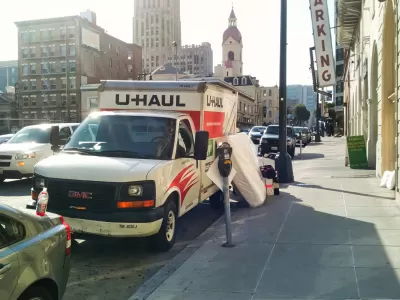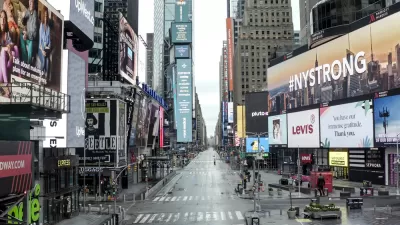Rising housing costs and the growth of more urbanized, amenity-rich small metros are driving college-educated workers away from “superstar cities.”

Increasingly expensive coastal cities are bleeding both low-income workers and college-educated workers, according to an article by Emily Badger, Robert Gebeloff, and Josh Katz in The New York Times. “This pattern, visible in an Upshot analysis of census microdata, is startling in retrospect. Major coastal metros have been hubs of the kind of educated workers coveted most by high-powered employers and economic development officials.”
Even before the pandemic, college-educated working-age adults were leaving cities like San Francisco and New York at higher rates every year. “A chart showing net domestic migration of college-educated working-age adults in the San Francisco metro area, going from an average annual gain of roughly 10,000 people before the pandemic to a loss of 25,000 people in 2021.”
Now, “affordability has broadly been eroding up the income spectrum in the country’s most expensive metros. As these regions have become richer, that has, among other things, helped fuel the rise in their housing prices.” The workers leaving these cities are migrating to other, less expensive but still thriving metro areas such as Phoenix, Atlanta, and Houston.
Read the source article for an in-depth analysis of domestic migration trends, the shifting needs and expectations of Americans, and the changes in smaller towns that have made them more attractive in recent years.
FULL STORY: Coastal Cities Priced Out Low-Wage Workers. Now College Graduates Are Leaving, Too.

Alabama: Trump Terminates Settlements for Black Communities Harmed By Raw Sewage
Trump deemed the landmark civil rights agreement “illegal DEI and environmental justice policy.”

Planetizen Federal Action Tracker
A weekly monitor of how Trump’s orders and actions are impacting planners and planning in America.

The 120 Year Old Tiny Home Villages That Sheltered San Francisco’s Earthquake Refugees
More than a century ago, San Francisco mobilized to house thousands of residents displaced by the 1906 earthquake. Could their strategy offer a model for the present?

Ken Jennings Launches Transit Web Series
The Jeopardy champ wants you to ride public transit.

BLM To Rescind Public Lands Rule
The change will downgrade conservation, once again putting federal land at risk for mining and other extractive uses.

Indy Neighborhood Group Builds Temporary Multi-Use Path
Community members, aided in part by funding from the city, repurposed a vehicle lane to create a protected bike and pedestrian path for the summer season.
Urban Design for Planners 1: Software Tools
This six-course series explores essential urban design concepts using open source software and equips planners with the tools they need to participate fully in the urban design process.
Planning for Universal Design
Learn the tools for implementing Universal Design in planning regulations.
Clanton & Associates, Inc.
Jessamine County Fiscal Court
Institute for Housing and Urban Development Studies (IHS)
City of Grandview
Harvard GSD Executive Education
Toledo-Lucas County Plan Commissions
Salt Lake City
NYU Wagner Graduate School of Public Service





























